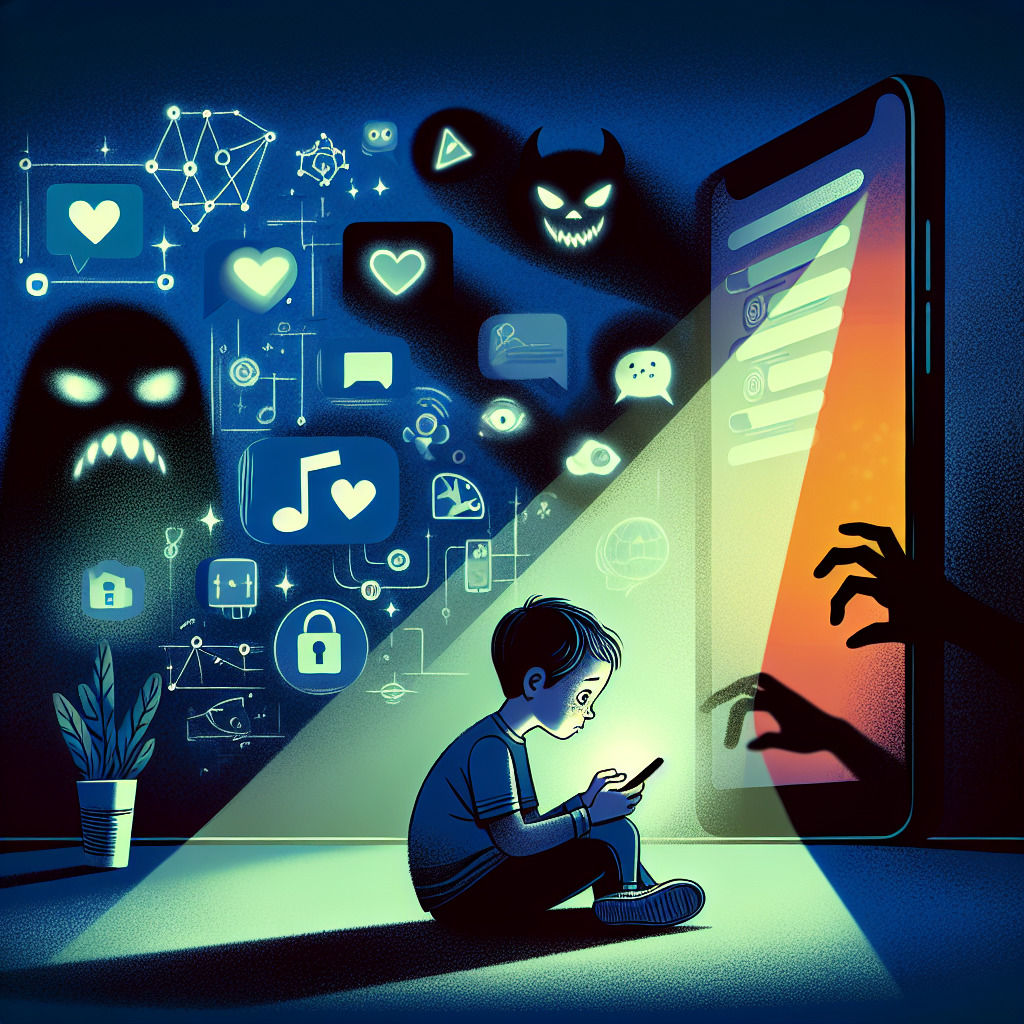Key Takeaways
Introduction
In today’s digital age, social media has woven itself into the fabric of our daily lives. For children, in particular, these platforms offer a space for socialization, learning, and entertainment. However, beneath these layers of benefits, lies a minefield of hidden dangers that can affect young minds in profound ways. Understanding these risks is the first step towards safeguarding the well-being of children in the digital world.
The Impact on Development and Mental Health
Childhood and adolescence are critical periods of development, and social media can greatly influence emotional and psychological growth. According to research, excessive use of social media is linked to increased feelings of anxiety, depression, and loneliness among children and teenagers. Constant exposure to perfectly curated images and success stories can create unrealistic expectations, leading to poor self-esteem and identity issues.
The Pressure to Fit In
Social media platforms can often amplify the pressure to fit into certain social circles. With the constant comparison to peers and the need for external validation, children may feel compelled to create an online persona that doesn’t truly reflect who they are. This constant push to conform can lead to stress and anxiety, as they strive to meet unattainable standards.
Impact on Sleep and Physical Health
Another significant concern is the impact of social media on sleep patterns. Engaging with screens late at night can disrupt the sleep hormone, melatonin, leading to poor sleep quality and sleep deprivation. Moreover, extended screen time can limit outdoor activities, contributing to sedentary lifestyles and, consequently, physical health issues.
Exposure to Cyberbullying and Privacy Risks
The anonymity and reach of social media have broadened the spectrum of bullying, with cyberbullying becoming a prevalent issue. Children may face harassment, threats, or shaming online, all of which can have severe emotional and psychological repercussion. Unlike traditional bullying, the digital nature of cyberbullying means it can occur 24/7, making it harder for children to escape its effects.
Understanding Privacy Risks
Children often lack the foresight to comprehend the long-term implications of sharing personal information online. They may unintentionally reveal sensitive information, making them vulnerable to identity theft and other privacy breaches. It’s crucial for kids and parents to understand that whatever is shared online can potentially be accessed by strangers and could remain on the internet indefinitely.
The Role of Parents in Safe Social Media Use
As the first line of defense, parents play a vital role in guiding their children through the complexities of social media. Open communication, education, and setting boundaries are key to ensuring that children navigate these platforms safely.
Setting Healthy Boundaries
Parents should establish clear rules regarding social media use, emphasizing the importance of balancing online activities with real-life interactions and responsibilities. Limits on screen time and regular discussions about the content they encounter online can help in maintaining a balanced digital diet.
Encouraging Open Communication
Encouraging open dialogue about social media experiences is essential. Children should feel comfortable discussing any online issues with their parents or guardians. Conversations should focus on teaching children how to critically assess online information and how to respond to uncomfortable or dangerous situations.
Promoting a Healthy Digital Environment
Creating a family culture that prioritizes healthy digital habits is crucial. Parents can lead by example, demonstrating balanced use of social media and emphasizing offline activities.
Screen-Free Zones and Times
Establish designated screen-free zones or times, such as during meals or family outings. This encourages children to engage in face-to-face communication and fosters stronger family bonds.
Educating About Digital Literacy
Incorporate lessons on digital literacy into children’s learning routines. Teach them how to identify credible sources of information, the importance of privacy settings, and the potential impact of their digital footprint.
Conclusion
While social media offers numerous benefits, the hidden dangers for children cannot be overlooked. By understanding these risks and taking proactive steps, parents can help their children enjoy social media’s positive aspects while minimizing potential harm. Encouraging healthy habits, fostering open communication, and establishing boundaries are key strategies in nurturing a safe and supportive digital environment. As we continue to navigate the ever-evolving landscape of technology, it is crucial to stay informed and vigilant, ensuring that social media serves as a positive force in our children’s lives.

